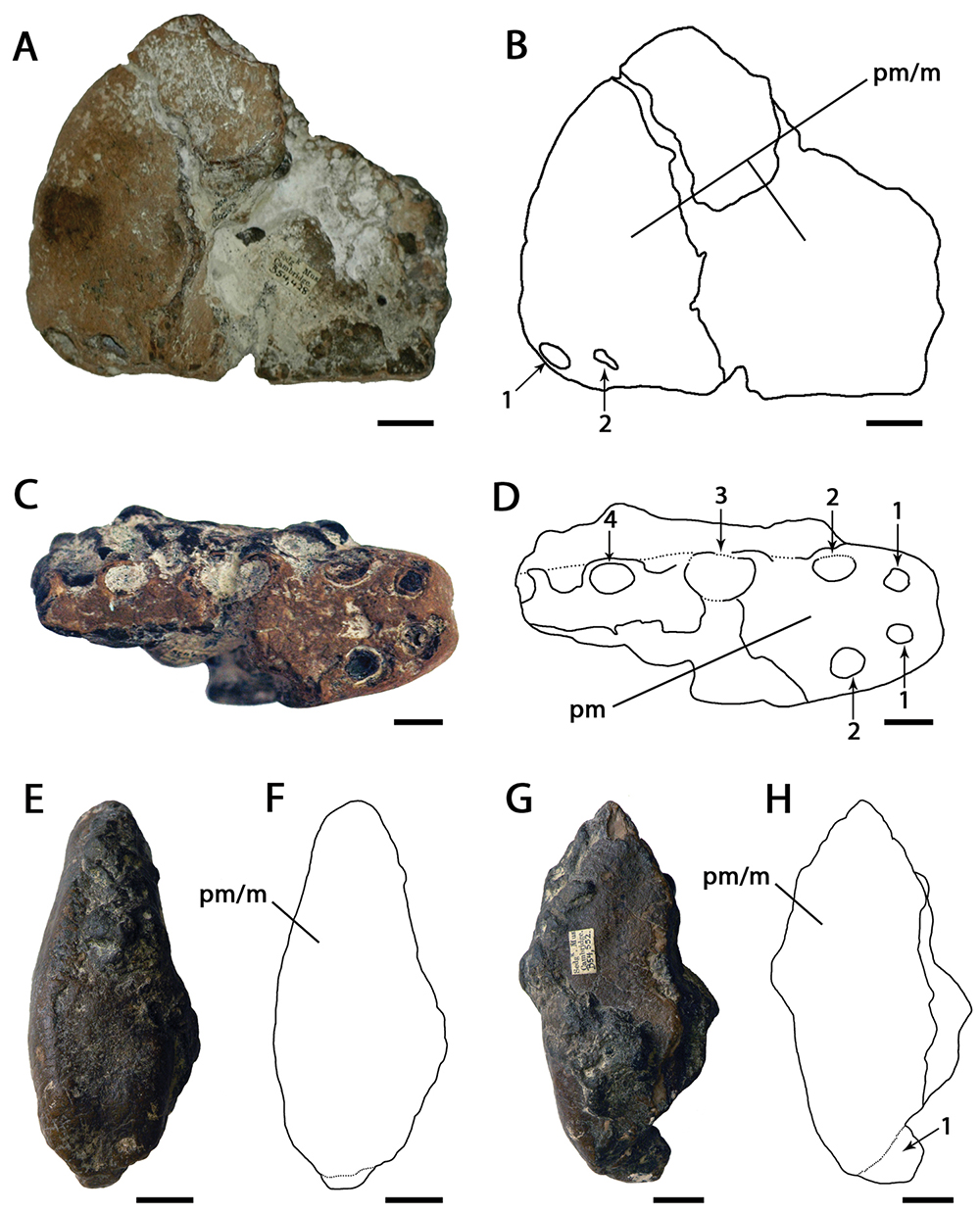|
Brasileodactylus
''Brasileodactylus'' a genus of pterosaur from the Aptian-age (Early Cretaceous period) lower Santana formation of Chapada do Araripe, Ceará, Brazil. The genus was named by paleontologist Alexander Wilhelm Armin Kellner in 1984. The genus name means 'pterosaur (literally, ing"finger") from Brazil'. The type species is ''Brasileodactylus araripensis''. The specific name refers to the Araripe Plateau. The holotype, MN 4804-V, is the front part of a mandible. Later remains referred to ''Brasileodactylus'' include SMNS 55414, a mandible, and MN 4797–V, the front of a snout and mandible. More complete fossils are BSP 1991 I 27, a fragmentary skeleton, and AMNH 24444, a long skull, with mandible and proximal left wing. The last two specimens have been assigned to a ''Brasileodactylus'' sp. indet. by André Jacques Veldmeijer. However, some of the more complete specimens may belong to other pterosaurs, such as '' Barbosania''. Description ''Brasileodactylus'' was a medium-sized ... [...More Info...] [...Related Items...] OR: [Wikipedia] [Google] [Baidu] |
Ornithocheiridae
Ornithocheiridae (or ornithocheirids, meaning "bird hands") is a group of pterosaurs within the suborder Pterodactyloidea. These pterosaurs were among the last to possess teeth. Members that belong to this group lived from the Early to Late Cretaceous periods (Valanginian to Turonian stages), around 140 to 90 million years ago. Ornithocheirids are generally infamous for having an enormously controversial and very confusing taxonomy. Although agreements that these animals were related, and therefore similar to istiodactylids and pteranodontians, there is still no virtual consensus over the exact content and interrelationships of this group. Ornithocheirids were the most successful pterosaurs during their reign, they were also the largest pterosaurs before the appearance of the azhdarchids such as ''Quetzalcoatlus''. Ornithocheirids were excellent fish hunters, they used various flight techniques to catch their prey, and they are also capable of flying great distances without fl ... [...More Info...] [...Related Items...] OR: [Wikipedia] [Google] [Baidu] |
